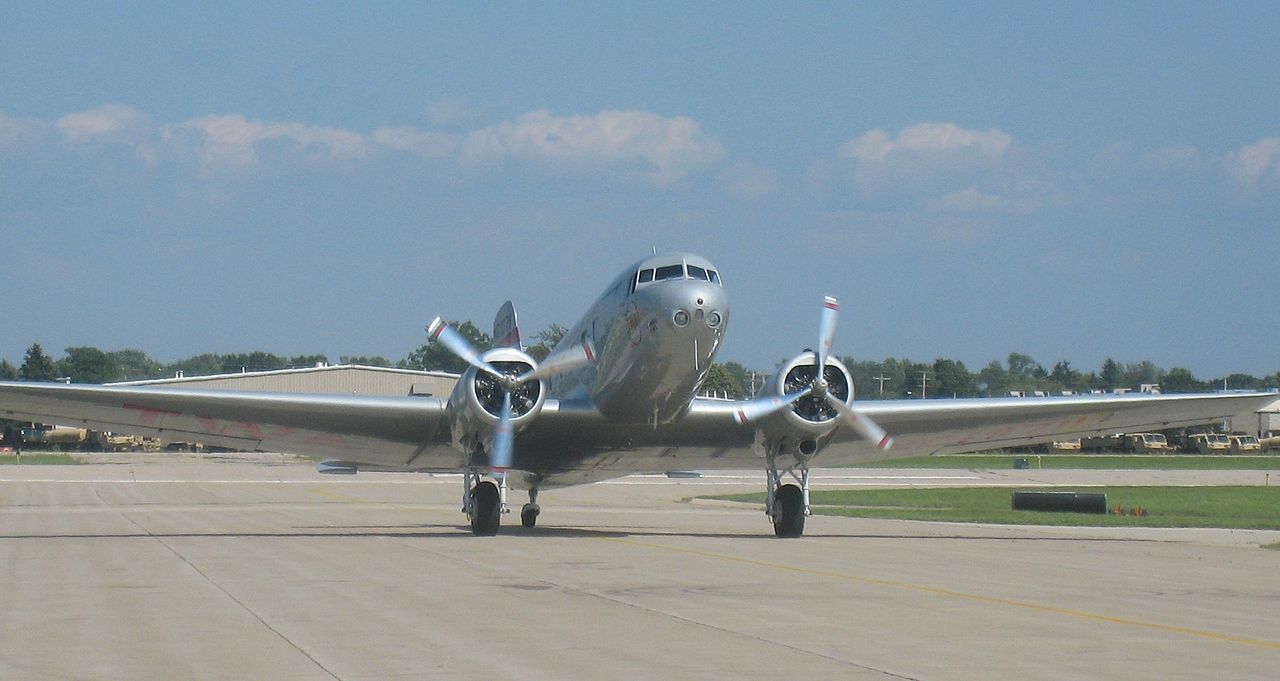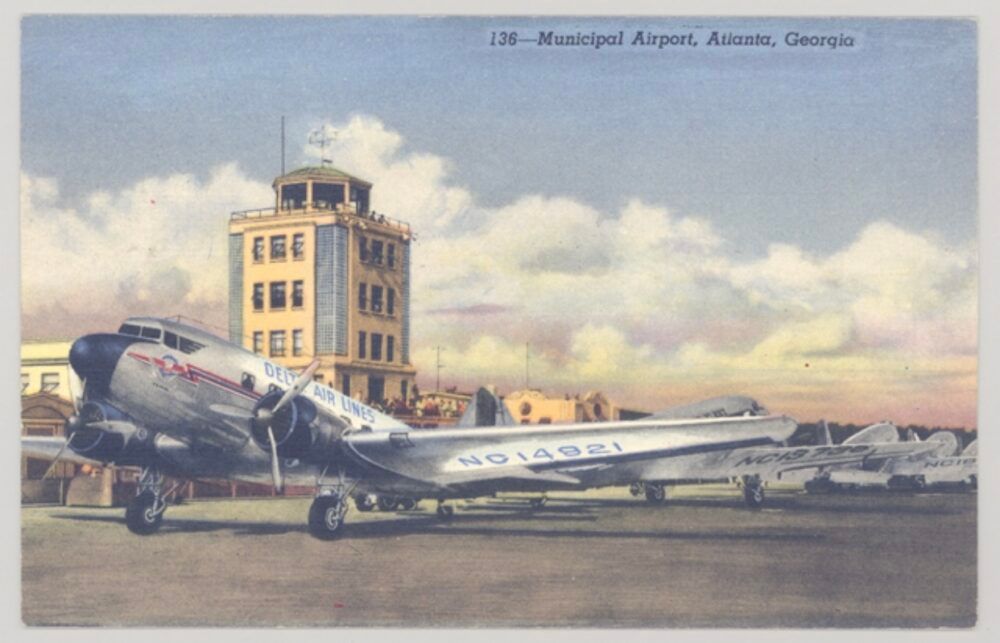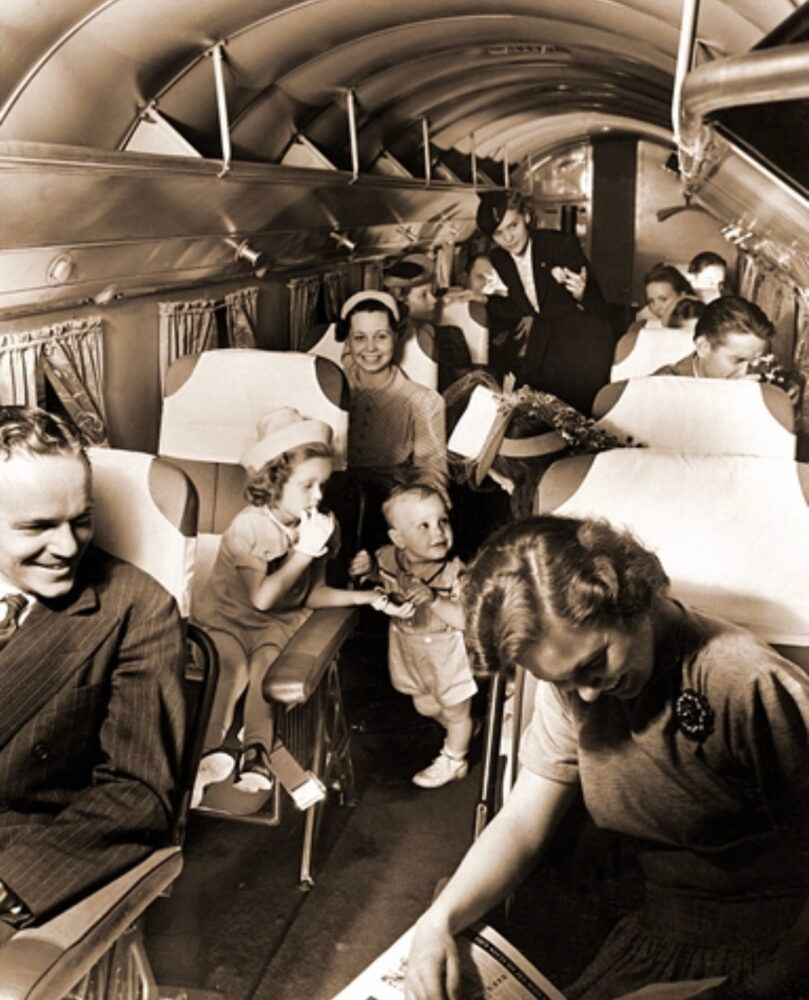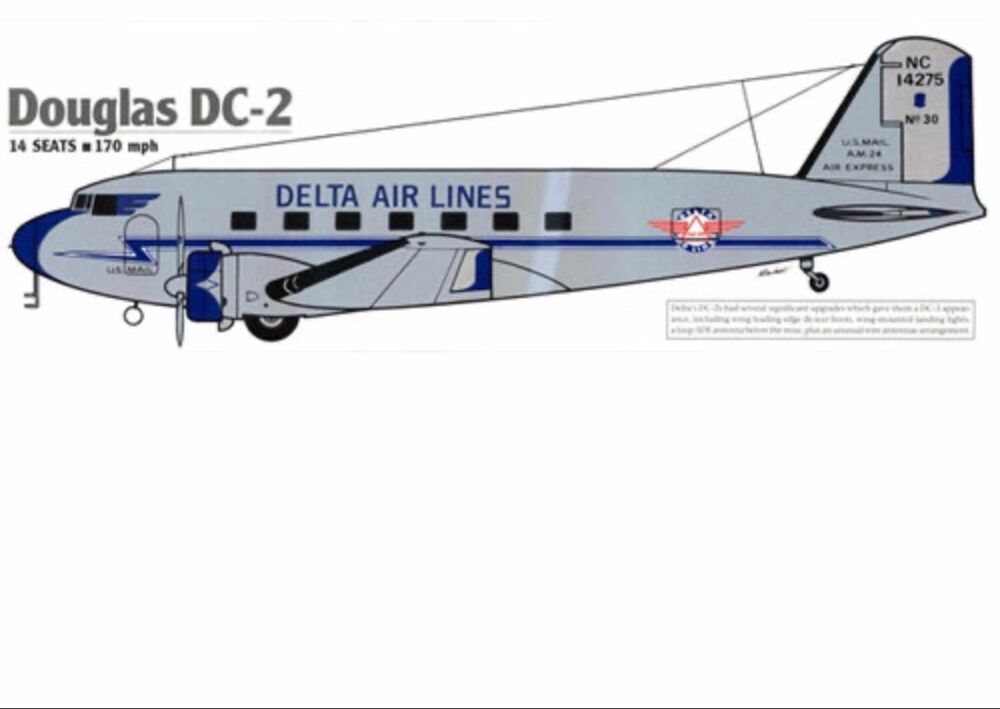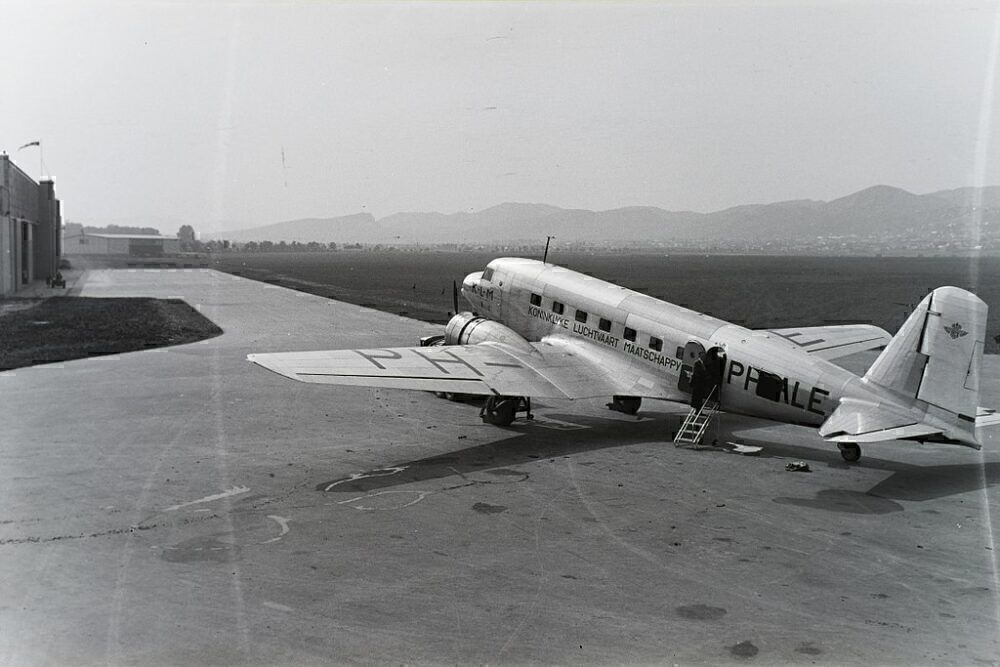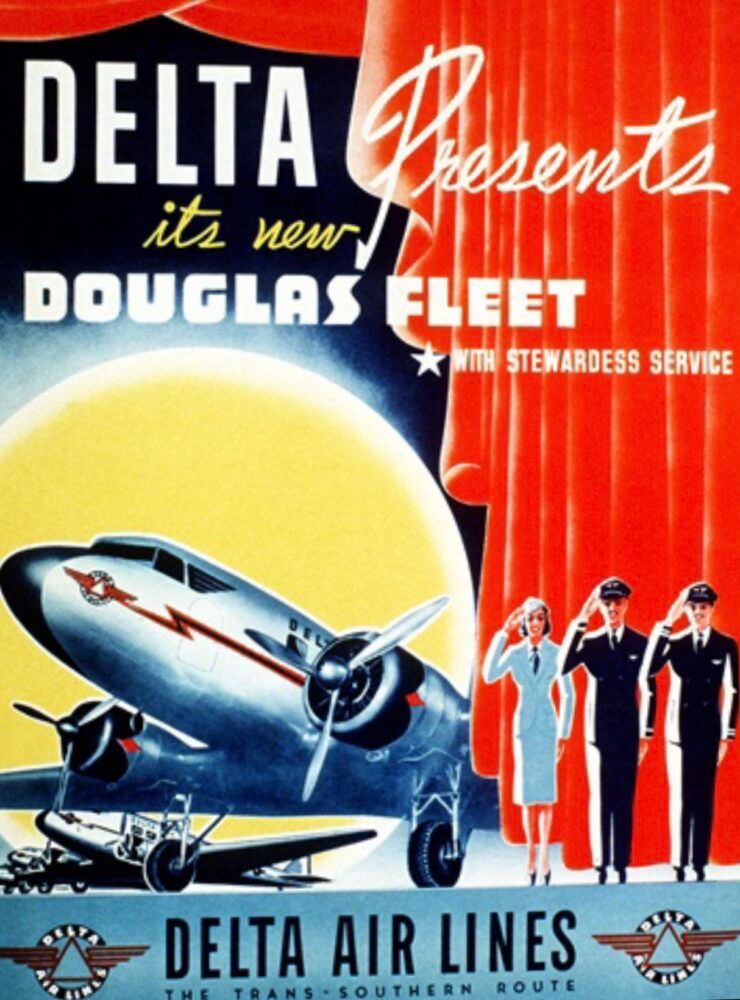In 1940, Delta Air Lines took on new aircraft in the form of the Douglas DC-2. However, this propeller aircraft wouldn't last so long in the carrier's fleet. The plane left the operator the year after it made its first flight.
Taking it to the next level
The Delta Flight Museum notes that this aircraft was the first of Delta's where passengers and crew members could stand up straight when walking through the cabin. Additionally, travelers could also board and exit by using ramps pushed up to the planes. This factor was notable as preceding and shorter aircraft of the airline's only required step stools for people to hop on and off. Another advancement was that the DC-2 needed an additional crew member. This employee is what we now know as a flight attendant.
Altogether, Delta flew four units of the type, and the first of them arrived from American Airlines. These planes had an MTOW of 18,560 lbs, a range of 1,000 miles, and could reach speeds of 170 mph. Two Wright Cyclones powered the aircraft to reach these levels.
The planes each held a length of 62 feet, a height of 16 feet, and a wingspan of 85 feet. Altogether, 14 passengers could fit onboard each unit. Capacity was the key reason why Delta took on the type. It could hold four more passengers and up to 80% larger payload than the Lockheed 10 Electra.
It was short but pleasant
The first arrival occurred on February 4th, 1940, and it was just over a month before it began operations. The initial March 15th introduction was delayed. So, the next day, the DC-2 entered scheduled service for the first time with Delta.
The type could be seen on a route from Dallas/Fort Worth, Texas to Charleston, South Carolina. This journey was also known as Air Mail Route 24.
The globe was going through a massive shift at the beginning of the 1940s, with the impact of World War II spreading. Subsequently, these DC-2s were acquired by the British Purchasing Commission for use in the war. As a result, by the time 1941 was in full swing, Delta was no longer operating these planes.
A crucial era
Delta would focus its efforts to help out in the war effort as the US scaled up its involvement following the attack on Pearl Harbor in 1941. So, the sale of these planes to help out in the fight would have naturally coincided with the company's goals.
Delta leader C.E Woolman spoke about the united front that was needed during this difficult period. Regardless, he knew that the aviation industry would bounce back stronger following the conflict.
"Out of every evil must come some good, it is said. From this war, which has been forced upon us, will come some of the outstanding developments in the comparatively short history of aviation," Woolman said in January 1942, according to the Delta Flight Museum.
"From these united efforts will come many things; and, when this war is ended, we will find the air industry advanced at least a dozen years almost overnight."
The next level
Boeing highlights that the DC-2 drew inspiration from the technical success of the Douglas DC-1 and was introduced only a year after its predecessor's first takeoff. It held a similar shape but was more powerful and could handle longer journeys. It could also hold two more passengers than the original plane.
Notably, the DC-2 was the first Douglas airliner to fly commercially with a carrier not based in the US. KLM Royal Dutch Airlines entered one of its DC-2s in the London-to-Melbourne, Australia, air race in October 1934. During the journey, the aircraft made every scheduled passenger stop on KLM’s regular 9,000-mile route, which was 1,000 miles longer than the official race route. It also transported mail and even turned around once to pick up a traveler that was stranded.
Nonetheless, the plane came second in the race. However, in the first place unit was a specifically-built racing plane. So, the DC-2 gained an excellent reputation, and many airlines rushed to snap up it up for their operations. In fact, it became the first Douglas aircraft to receive the revered Collier Trophy for outstanding achievements in flight.
Progress made
Altogether, between 1934 and 1937, Douglas produced 156 DC-2s at its site in Santa Monica, California. Undoubtedly, the type helped bring the aviation industry a few steps closer to its considerable rise in subsequent years.
Delta would go on to operate several more aircraft in the DC series. The Atlanta-based carrier also took on the DC-2, DC-3, DC-4, DC-6, DC-7, DC-8, DC-9, and DC-10, establishing a long-term relationship with Douglas.
The airline actually received the DC-3 later in the same year that it first took on the DC-2.This plane had far greater success with the carrier. It flew for two decades with Delta's livery and had greater abilities than the previous entrant in the series. We will cover more details about this type and the airline's operations with it in the coming weeks.
What are your thoughts about the Douglas DC-2 and its operations? Would you have liked to see Delta Air Lines fly with the plane a little longer? Let us know what you think of the aircraft in the comment section.

